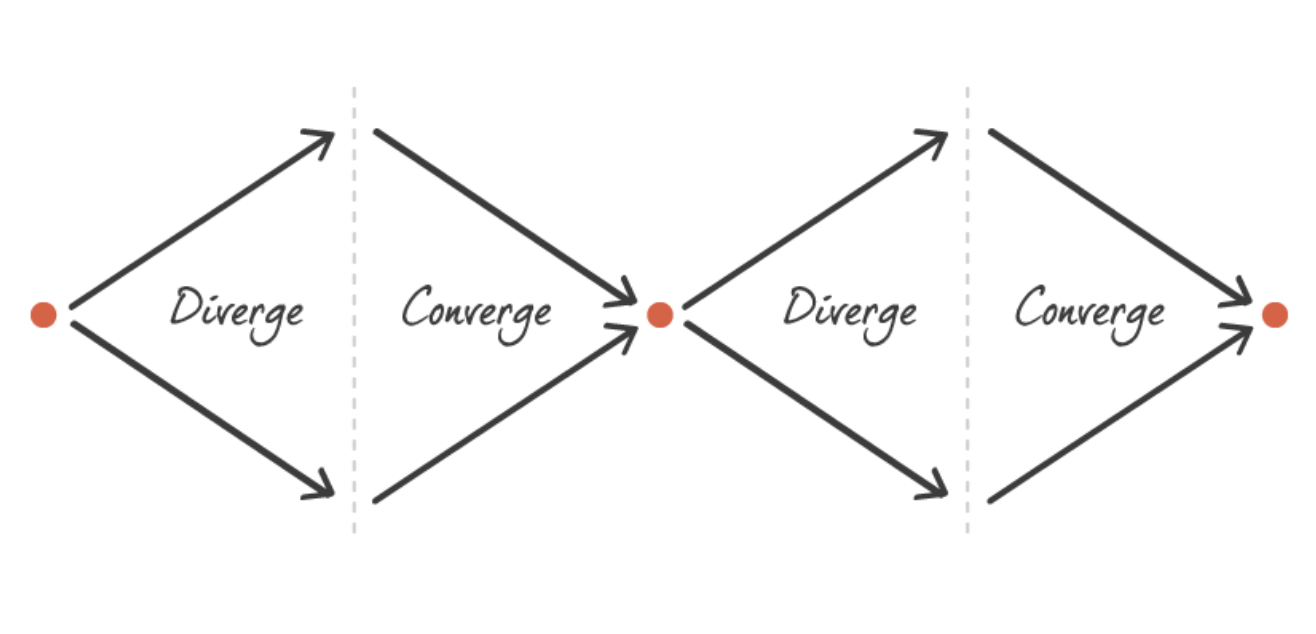There are two important concepts of Taoism that help shed light on Whitehead: taiji and wuji.
Taiji ![]() is the world manifested and experienced. It is _order_, it is the world around us in which two dynamics flow, 'yin' a convergent dynamic, and 'yang' a divergent dynamic.
is the world manifested and experienced. It is _order_, it is the world around us in which two dynamics flow, 'yin' a convergent dynamic, and 'yang' a divergent dynamic.
It is the dance of these two dynamics that allows creation to evolve in the world. These dynamics mirror the dynamic of convergence-divergence-convergence that we experience in the design process.

Collective Hyperlearning
What fascinates us is the unknown of the wuji ![]() that from which this dance emerges. Wuji is _chaos_, the unknowable, that which is the formless we now call 'dark energy' and 'dark matter' comprising some 95% of all that is. Whitehead called this unknowable 'God'.
that from which this dance emerges. Wuji is _chaos_, the unknowable, that which is the formless we now call 'dark energy' and 'dark matter' comprising some 95% of all that is. Whitehead called this unknowable 'God'.
He called the taiji, that which is, the 'Cosmos' or the 'World'. His 'three ultimates' then included something he called 'Creativity' – _emergence_ – which he said was 'becoming'.
This emergence is in the empty space of creativity, an overlapping of Whitehead's concept of God and the World – chaos and order – the nothingness from which there is something, that something he called 'actual occasions'.
A space of Emergent Moments where there is the 'surprise' that Friston talks about. One from which we might make meaning, create order, through 'Bayesian belief updates'.
ensō
That space of emergence which the Taoists and Buddhists call Wu Wei a non-temporal space of temporal emergence that came to be represented by the ensō.
Bohm talks about creating 'free space' that allows for emergence of a collective creative imagination in his dialogue practice. Perhaps as theoretical physicist immersed in a quantum reality, he sensed the same insight as we are all grasping for as we seek a shared understanding of this Emergent Whitespace.
Here is a poem from Laozi ![]() that helps us more fully live into this insight:
that helps us more fully live into this insight:
>Thirty spokes will converge
In the hub of a wheel;
But the use of the cart
Will depend on the part
Of the hub that is void.
>
With a wall all around
A clay bowl is molded;
But the use of the bowl
Will depend on the part
Of the bowl that is void.
>
Cut out windows and doors
In the house as you build;
But the use of the house
Will depend on the space
In the walls that is void.
>
So advantage is had
From whatever is there;
But usefulness rises
From whatever is not.
>
source ![]()
DOT FROM preview-next-diagram